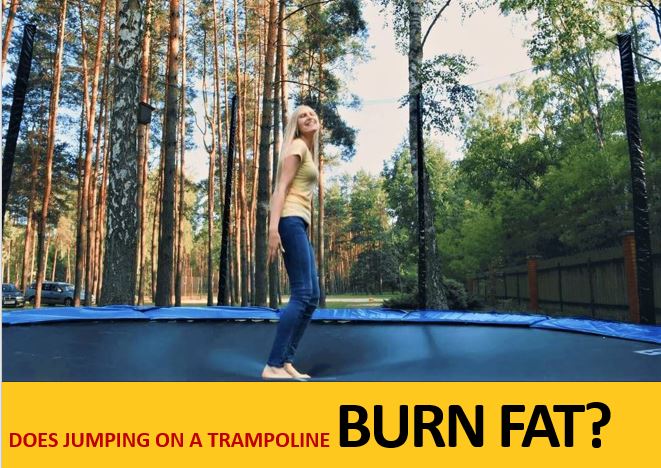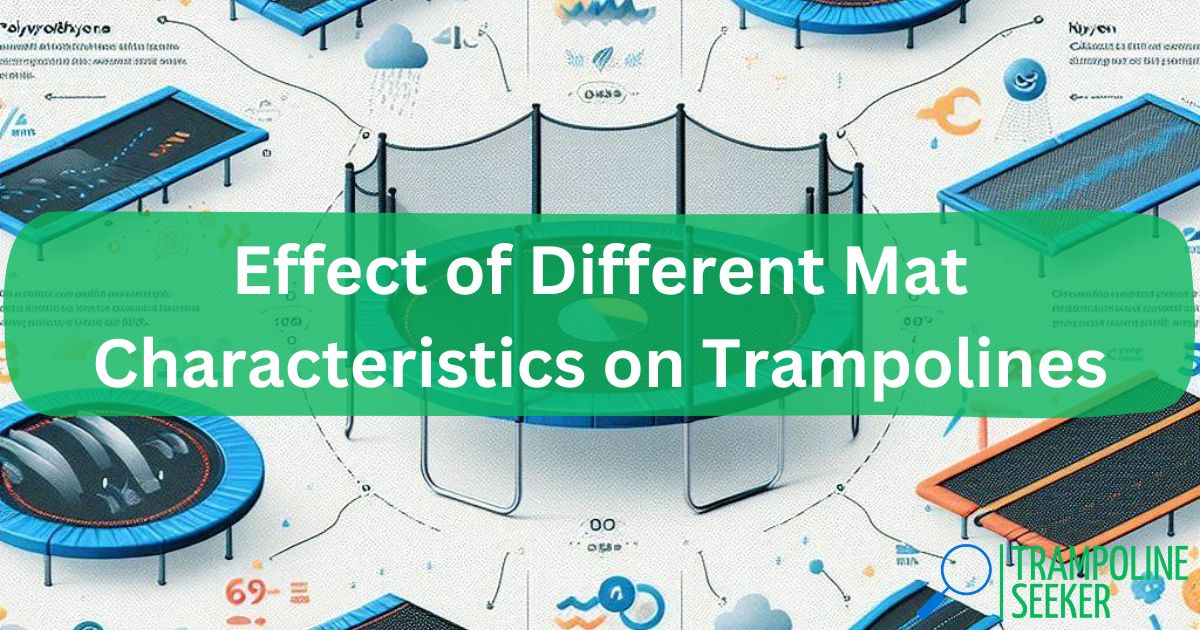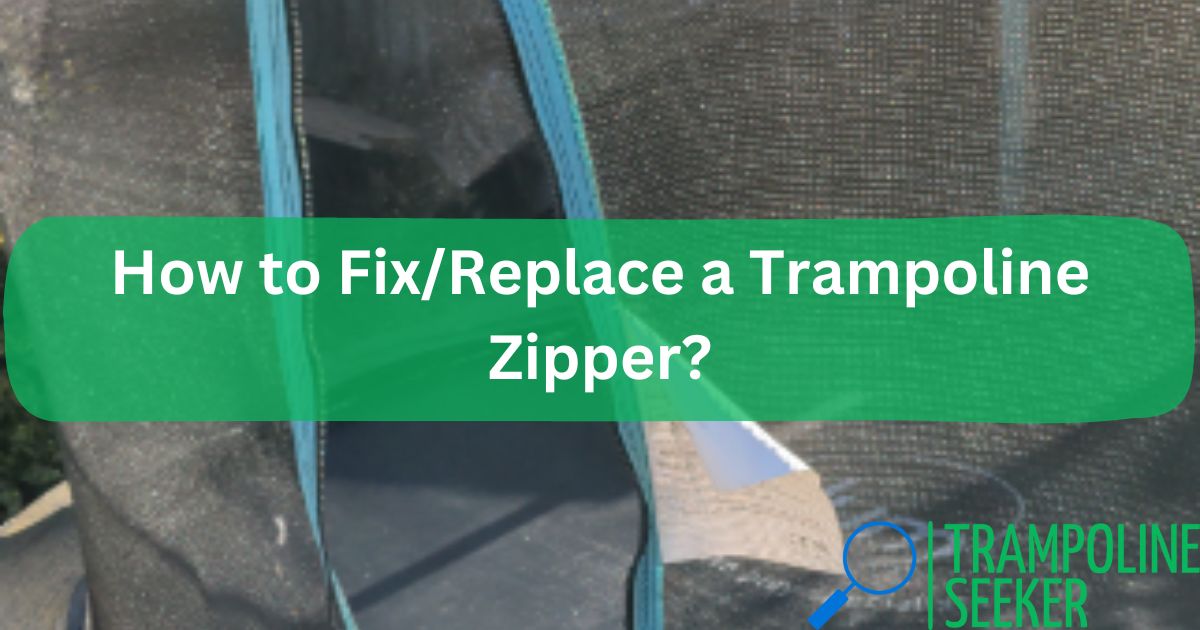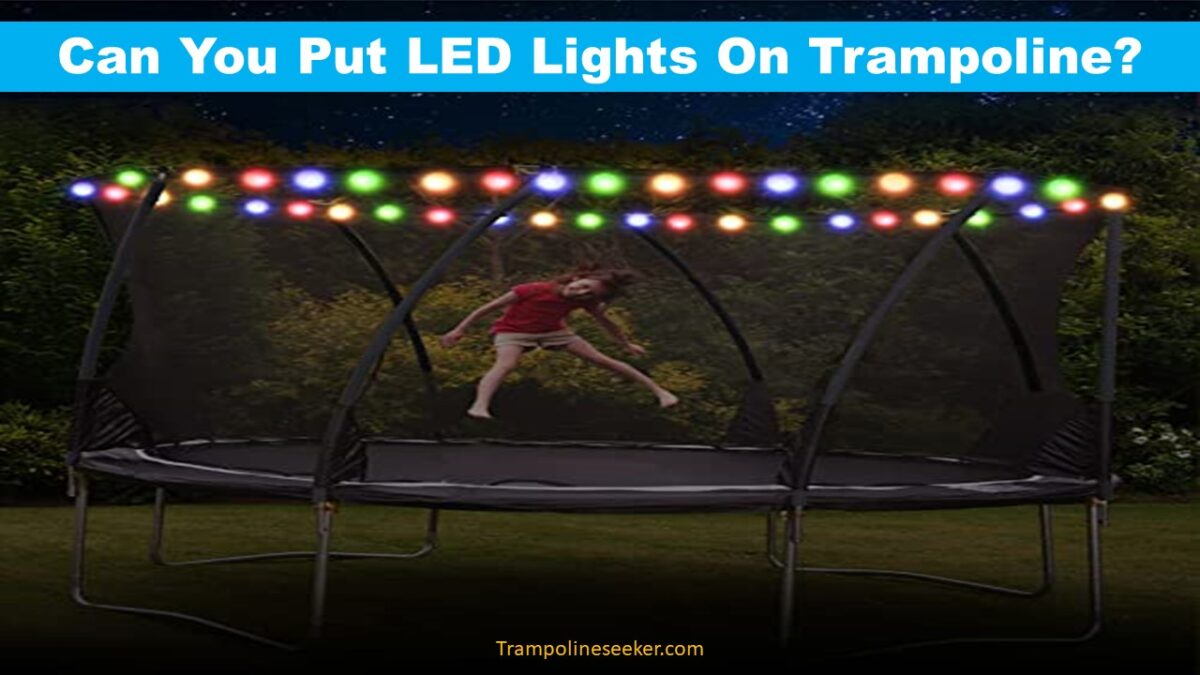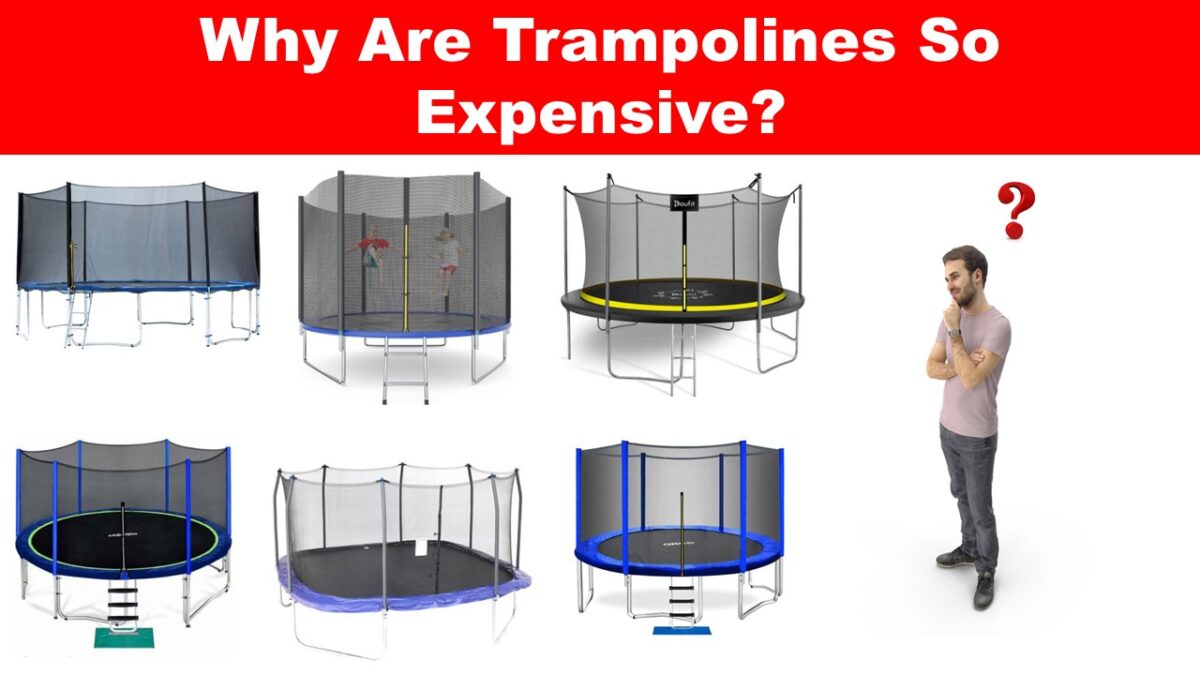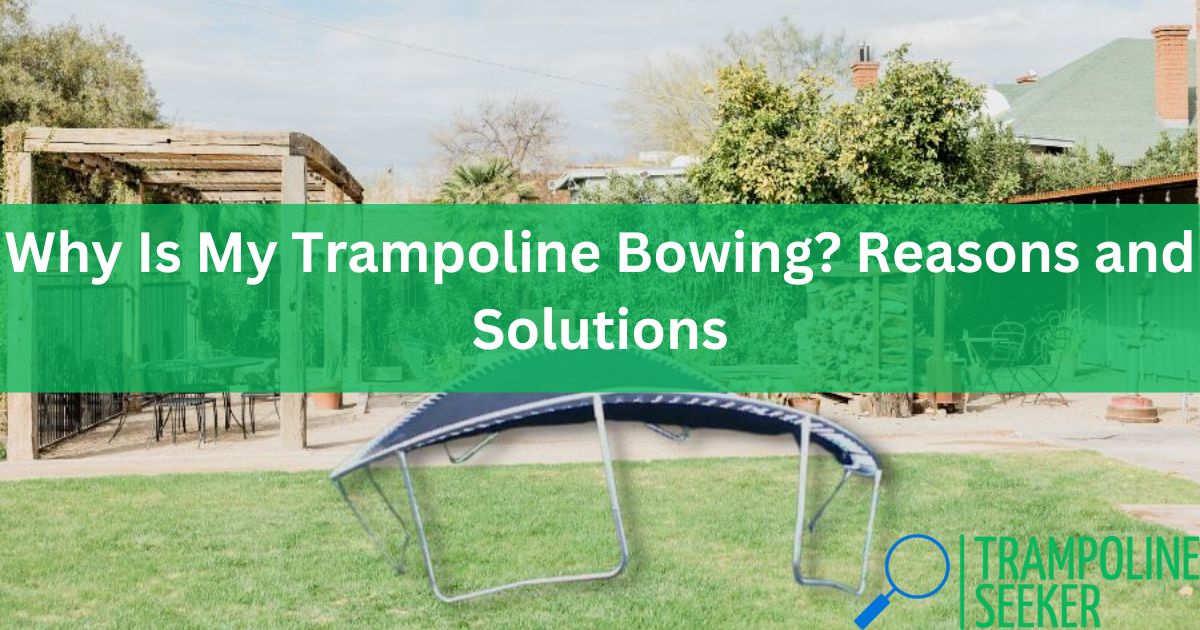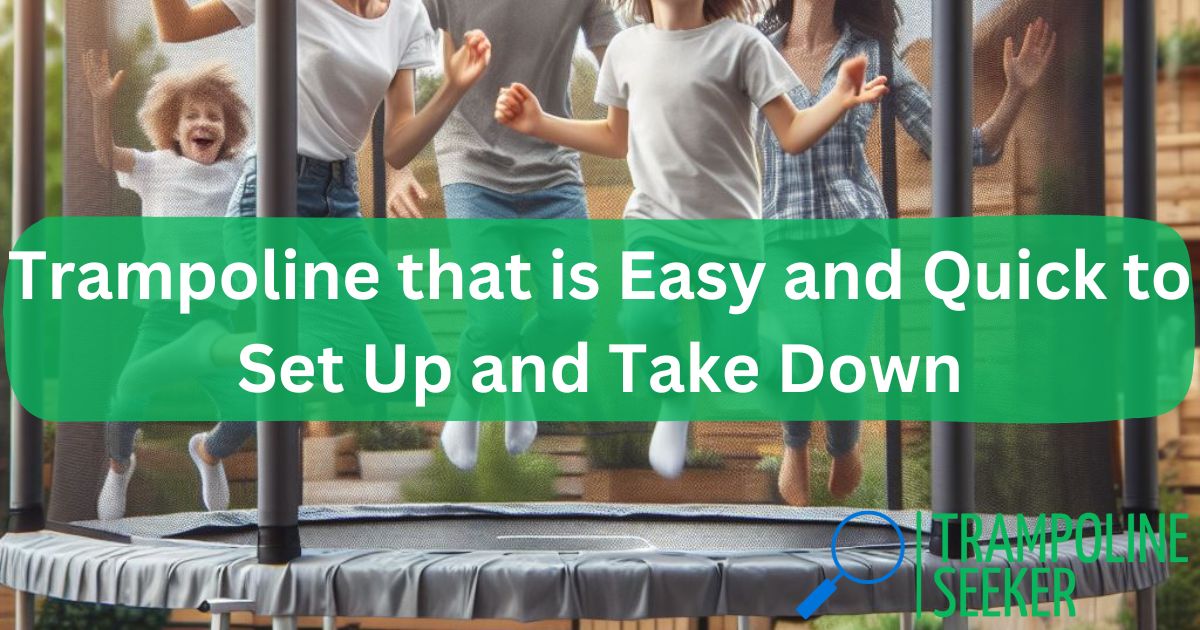Have you ever wondered why trampolines with crisscrossed springs seem to give higher, more effortless bounces? As an experienced trampoline jumper and backyard trampoline owner, I have researched this topic in depth.
In this blog, I will break down the physics behind how crossed springs provide better lift, less air resistance, and an overall improved bounce.
In short, crisscrossed springs on a trampoline mat allow the jumper to sink less into the mat before recoiling upwards. This results in more available potential energy converted into kinetic launch energy. Additionally, the tense web of springs cuts down on mat billowing and air resistance. The end result is a feeling of increased height and hangtime for jumpers on trampolines specifically rigged with intersecting spring patterns.
How Trampoline Springs Work

Before analyzing crossed spring configurations further, it helps to understand how basic trampoline springs function.
Standard Spring Layout
On a traditional backyard trampoline with a basic spring pattern, each spring connects to the outer trampoline frame on one end, with a hook or clamp securing it to the jumping mat on the opposite end. As downward pressure is exerted on the mat during contact from a jumper, the springs stretch outwards and downwards, creating tension. This tension stores potential energy. As the jumper begins ascending again, that stored potential energy converts to upward thrust kinetic energy from the springs recoiling. This recoil action propels the jumper higher on the next bounce.
Factors Influencing Bounce Height
The height a jumper can achieve on a specific trampoline depends on:
- Spring tension – Higher tension springs can store more potential energy when stretched by the jumper’s weight. They also recoil with greater force.
- Spring count – More springs mean more potential energy can be stored across the mat surface area.
- Mat bounce – Mats with less stretch retain more kinetic energy for upward propulsion.
- Jumper effort – The more active push a jumper applies on the mat during ground contact greatly impacts airtime.
Understanding these basic factors, we can now analyze crossed spring configurations.
How Crisscrossed Springs Enhance Bounce

Trampolines with crisscrossed, or interlaced springs provide better bounce through 3 mechanisms:
- Increased pre-tension – Springs anchor to the mat in angled orientations and must stretch further to suspend the mat’s weight. This pre-loads more potential energy.
- Less mat compression – Intersecting springs provide a tighter, more cohesive netting that limits mat sinkage and billowing.
- Greater efficiency – With less mat deformation and resistance from air drag, more stored spring energy converts to upward launch kinetic energy.
Let’s expand on how each mechanism achieves better lift and hangtime.
1. Pre-Tensioned Springs
On a traditional spring layout, springs attach straight from the frame to the mat in a perpendicular orientation. The equilibrium tension when a jumper lands allows the mat to sink and springs to stretch a certain amount.
With crisscrossed springs, the springs anchor to the mat in angled directions before interfacing with the frame. This means at rest, the springs must stretch further to suspend the mat’s weight. The springs are essentially “pre-tensioned”, storing more potential energy when stationary.
Then, as a jumper lands, the angled springs stretch even further before reaching their elastic limit. This additional extension upon ground contact enables more possible potential energy accumulation.
Ultimately, when the jumper begins their upward launch, the crisscrossed springs release all this built-up tension with greater recoil force. The end result – enhanced lift and airtime.
2. Limited Mat Compression
A common problem with traditional spring layouts is pronounced mat compression with each bounce. As the uniformly oriented springs all stretch downwards, wide sections of the mat can billow beneath the jumper. This deformation meets increased wind resistance, wasting some of the mat’s kinetic energy fighting air drag.
Crisscrossed springs form a tight, interlaced web. This web acts almost like a net, limiting the degree of mat billowing as springs tension and recoil. With less mat deformation against air resistance, more kinetic energy transfers directly into bounce.
3. Efficient Energy Transfer
The combined effects of the above two mechanisms mean crisscrossed springs lose less stored potential energy to mat billowing, air drag, and heat dissipation. More energy directly converts into upward thrust kinetic energy, thanks to:
- Greater pre-tensioning
- Limited mat compression
This added efficiency again translates into increased lift-off velocity and hangtime for the jumper.
Real-World Height Comparison
But exactly how much extra bounce height do crisscrossed springs provide on average? Approximately 15-20%.
For example, let’s say a 180 pound man can achieve a max jump height of 8 feet on a traditional spring trampoline. On the exact same make trampoline with a crisscrossed spring upgrade, the same jumper would expect to reach heights around 9.5 – 10 feet.
Pros and Cons of Crisscrossed Springs
While crisscrossed springs optimize bounce, they do come with certain tradeoffs:
Pros
- Increased lift and hangtime
- Greater efficiency retaining energy
- Pre-tensioned for more spring recoil
- Minimized mat compression and billowing
Cons
- Harsher landings from added spring tension
- Trickier assembly and rebounding adjustments
- Higher initial cost for custom mounts
So while interlaced spring trampolines may provide record-breaking bounce potential, they also come with a stiffer ride. The tighter spring matrix transmits more shock through the mat during contact. This places higher strain on joints for jumpers.
Conclusion
In summary, crisscrossed trampoline springs offer gymnasts, athletes, and backyard thrill seekers up to 20% more air by:
- Pre-tensioning angled springs for greater recoil energy
- Limiting mat deformation through increased tension
- Converting a higher percentage of stored spring potential energy into upward thrust kinetic energy
However, the tradeoff is increased impact shock during landings. Luckily, advancements in impact-absorbing mat materials help offset this side effect.
Overall, trampoline manufacturers continue to test the bounds of physics to engineer evermore efficient, high-flying equipment. Intersecting spring patterns demonstrate one of many ongoing improvements towards this goal.
Other Related Blogs:
- How to Remove Rust from Trampoline Springs?
- Are Springfree Trampolines Worth The Money?
- Can I Upgrade the Springs and Mat on a Cheaper Trampoline?
- Partial Spring Replacement on Rectangular Trampoline
- How to Find the Right Size Spring Pad?
- How to Make Your Trampoline Bouncier?
- Trampoline Not Bouncy
- Do Trampolines Get Bouncier Over Time?
Frequently Asked Questions
Why are some Olympic trampolines triangular?
Triangular trampoline frames with 3 intersecting spring patterns leverage the same crisscrossing spring dynamics that enhance bounce. They also provide a tighter, more responsive sweet spot for elite aerial training.
How much do crossed springs cost to add?
For standard 14ft – 16ft residential trampolines, a crisscrossed spring upgrade ranges from $100 – $300 including installation.
What matters more, spring count or tension?
While highly tensioned springs provide more thrust, sufficient spring counts are still essential to evenly distribute tension across the mat. A balance of spring quantity and quality is key.
Can you crisscross springs on any trampoline?
It is possible to retrofit crisscross spring upgrades on many existing trampolines. However, some basic budget brands may lack the necessary anchor strength and frame load capacity to handle added tension. Always consult the manufacturer first.
Articles You May Like to Read:



